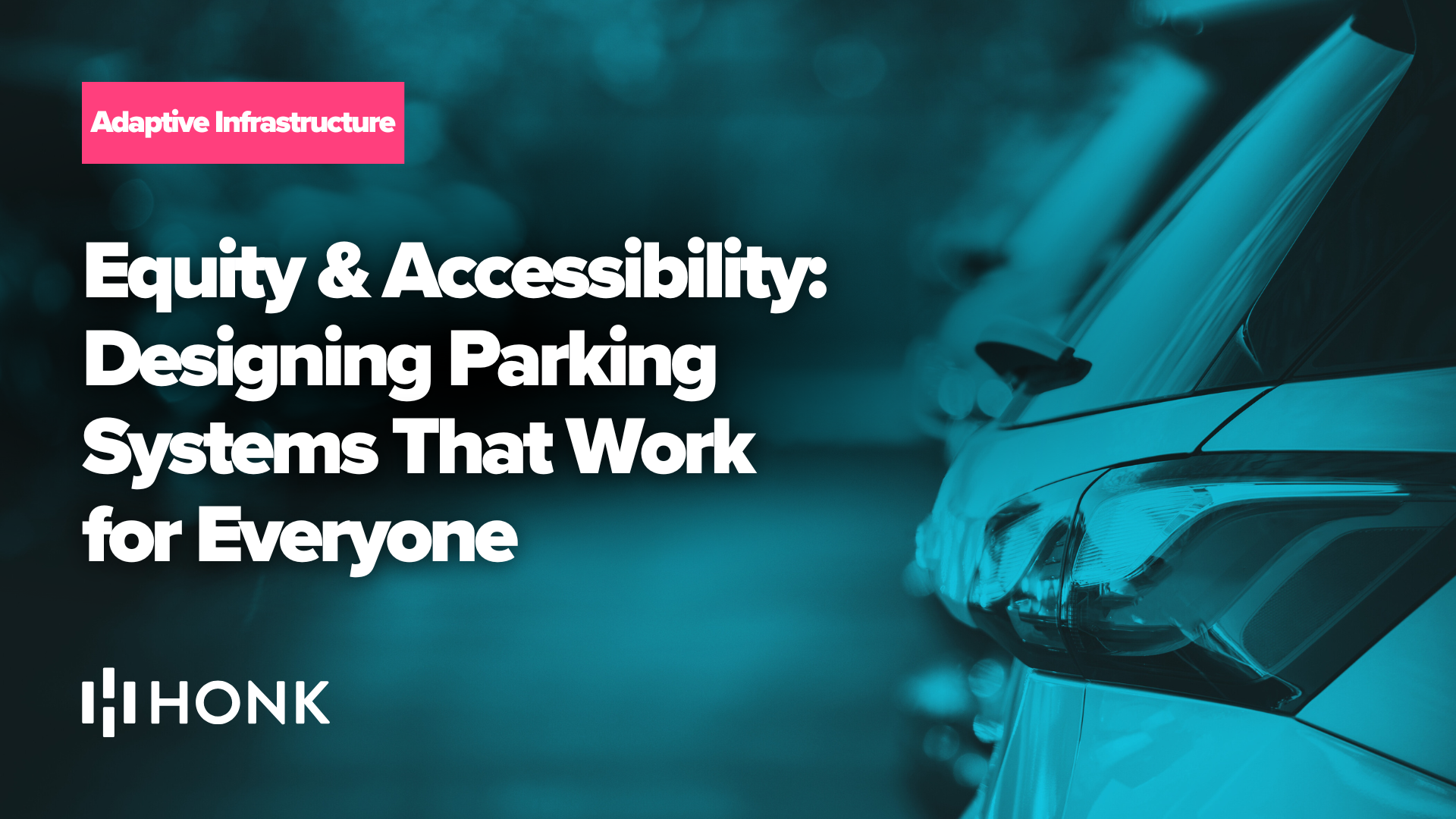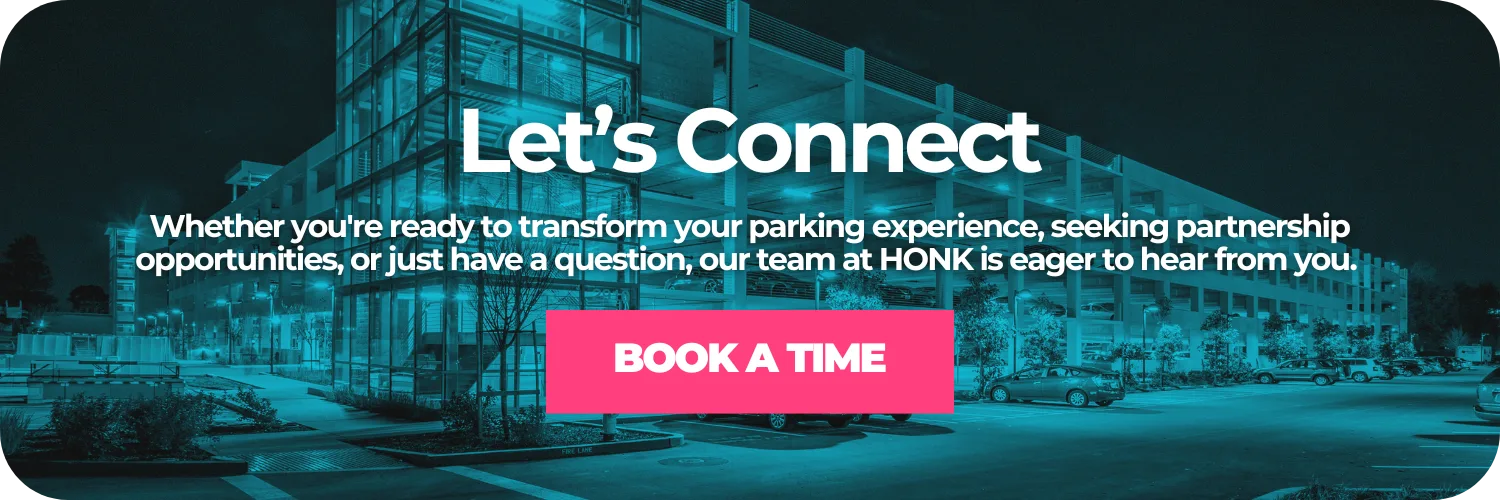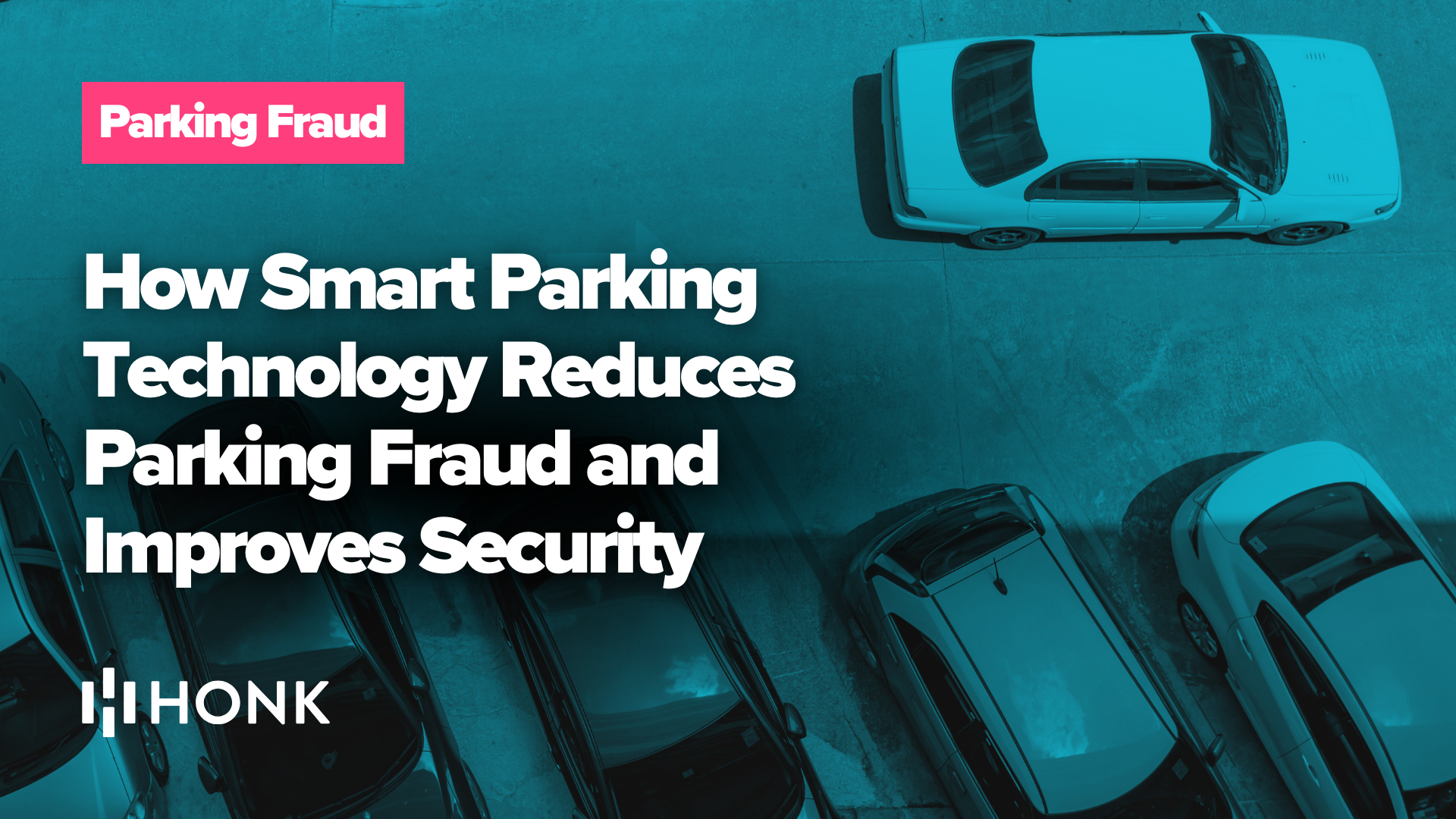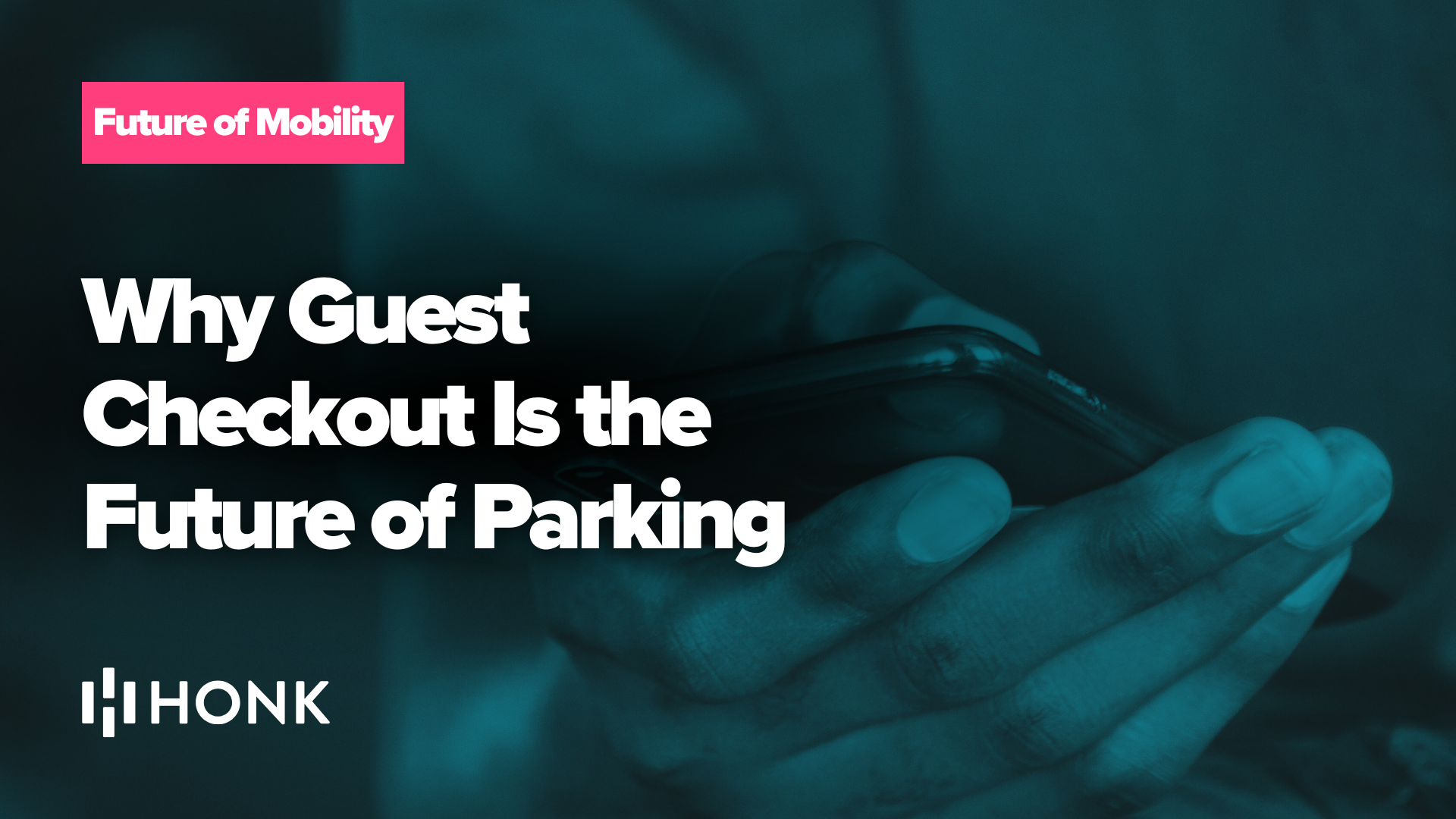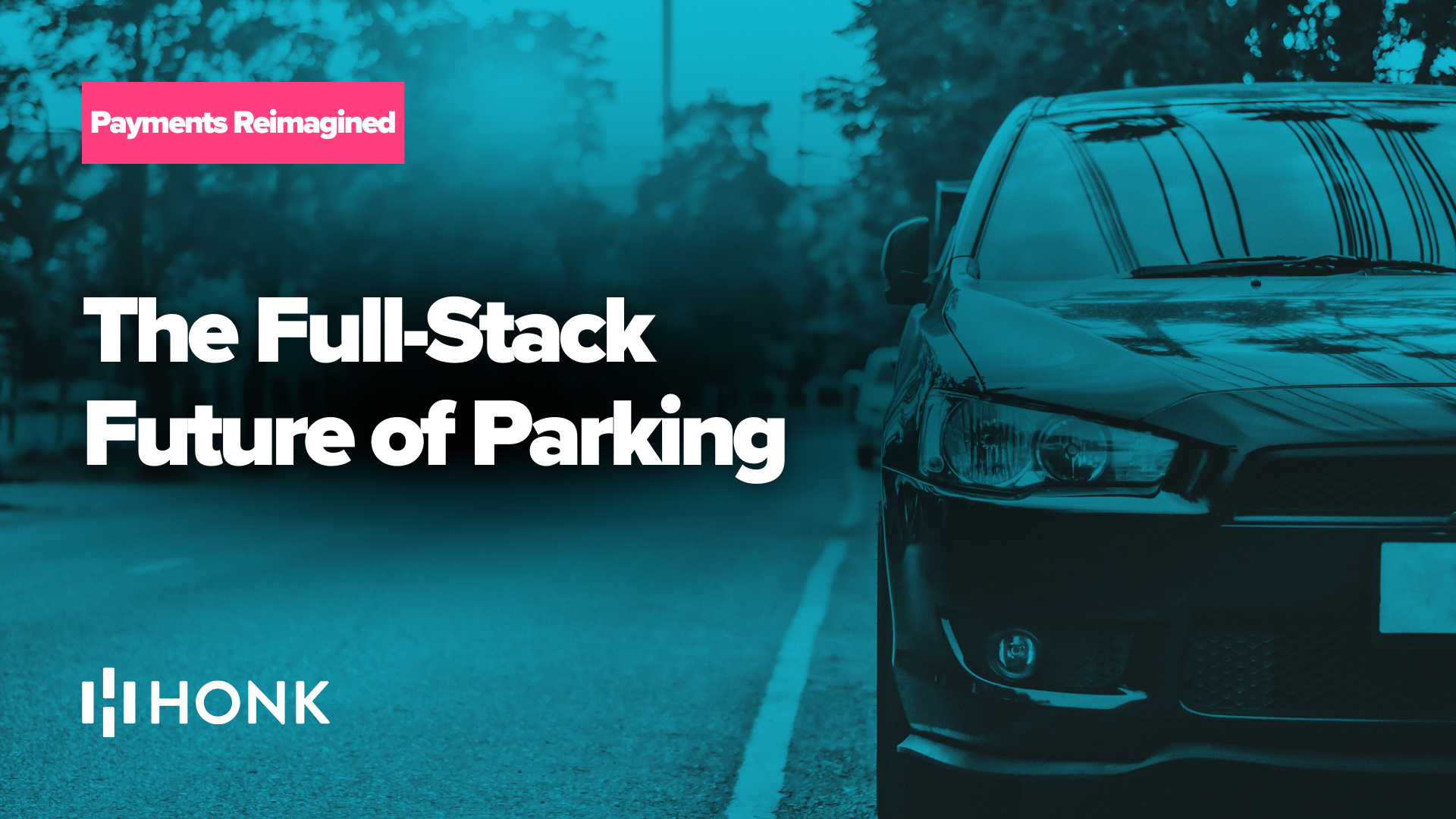Digital transformation has redefined nearly every aspect of daily life. From how we shop to how we travel, technology has streamlined experiences and created new efficiencies. Parking—once a manual, time-consuming, and often frustrating process—has evolved alongside this transformation. Through mobile payments, digital permits, and predictive analytics, finding and paying for parking has never been easier. But with every leap forward in technology comes an equally important question: Who is being left behind when mobility becomes digital?
At HONK, we believe innovation must serve everyone. True progress in parking means ensuring that every driver—regardless of age, income, ability, or access to technology—can participate in a modern mobility ecosystem. As parking moves into the digital era, accessibility and equity must guide every product decision, policy design, and municipal partnership.
The shift to smart, contactless systems shouldn’t widen the mobility divide—it should close it.
Why Equity and Accessibility Matter in Parking
Parking is more than just a space to leave a car; it’s a crucial link in the chain of daily mobility. When access to parking becomes limited or inequitable, entire communities can be affected. Low-income workers may find it harder to commute, people with disabilities may struggle to reach essential services, and residents without smartphones or credit cards may lose access entirely.
Digital parking systems, while convenient, can unintentionally create new forms of exclusion. If paying for parking requires a smartphone or online payment method, those without such resources face barriers to participation. In cities striving for smart mobility, the challenge is not only how to innovate but how to do so responsibly—without sacrificing fairness or accessibility.
From the very start, HONK’s mission has been to simplify parking for everyone. In The Contactless Parking Revolution: How Digital Solutions Drive Convenience and Safety, HONK described how contactless payments can eliminate friction, reduce touchpoints, and allow users to manage sessions in real time. But convenience is only one part of the story. Contactless parking also supports inclusion: for example, it allows drivers with mobility challenges to pay from their vehicles and reduces dependency on physical cash or kiosks.
When digital innovation also improves accessibility, technology fulfills its true purpose.
The Hidden Barriers in a Digital Parking World
While digital systems are designed for efficiency, they can unintentionally introduce new barriers. Some drivers lack smartphones, data plans, or internet access. Others are unbanked or underbanked, relying on cash or prepaid cards rather than credit. People with disabilities may encounter interfaces that don’t meet accessibility standards. Language barriers, literacy differences, and unreliable network coverage can make parking apps difficult or impossible to use.
These challenges are not edge cases—they represent millions of drivers. If digital transformation fails to include them, the convenience gained by some comes at the expense of others. Equity-centered design begins with acknowledging these realities and building systems that serve the full spectrum of users, not just the most connected.
How HONK’s Platform Supports Inclusion
HONK’s technology already offers several core features that promote accessibility and equity. Its flexible payment infrastructure, validation tools, and analytics capabilities provide a foundation for inclusive parking systems that operators can tailor to community needs.
The ability to pay without downloading an app is one of HONK’s defining accessibility features. In No Hardware, No Hassle: Why Parking Lot Operators Embrace App-Free, Contactless Payments, HONK explains how simple QR codes and mobile web payment options allow drivers to pay seamlessly—without requiring downloads, logins, or new accounts. This flexibility matters for users with older devices, limited data, or privacy concerns, ensuring no one is excluded from participating in digital parking.
Digital permits and license-plate-based access take inclusivity even further. By replacing physical passes or hangtags with digital credentials, HONK removes logistical and physical barriers for users with mobility challenges or limited transportation access. Permits can be issued, renewed, and managed remotely, giving drivers control and autonomy without unnecessary paperwork.
HONK’s validation and discount platform also plays a major role in equity initiatives. Originally designed for merchant validations, it enables property managers, hospitals, and municipalities to provide free or subsidized parking through digital vouchers or automatic discounts. These tools can easily power equity programs, such as discounted parking for low-income residents or validated access for essential workers.
Analytics bring accountability to inclusion. In Parking Analytics: Turning Data into Actionable Operational Insights, HONK highlights how data can guide operational improvements. The same analytics can measure equity outcomes—tracking subsidy usage, identifying underserved areas, and helping cities understand whether pricing strategies are fair. Transparency through data is key to meaningful progress.
Designing Inclusivity Into Every Layer
Equity and accessibility are not features; they are values that must shape every layer of product and policy design. From user interfaces to dynamic pricing, inclusivity should be embedded in every decision.
Accessibility begins with user experience. HONK continues to refine its platform to meet recognized accessibility standards such as WCAG, ensuring compatibility with screen readers, high-contrast design for visibility, and large, easy-to-tap buttons for users with dexterity challenges. Multilingual support is another essential element, enabling users in diverse communities to navigate the experience in their preferred language.
But equity also requires thoughtful pricing design. In The Full-Stack Future of Parking, HONK discusses how modern parking infrastructure integrates software, payments, and analytics into a unified system. This holistic approach gives operators flexibility to apply equity guardrails, such as capping rates near hospitals or community centers, providing discounted permits for qualifying residents, or reserving accessible spaces with digital verification. Technology should amplify fairness—not automate inequity.
HONK’s flexible infrastructure allows municipalities and private operators to define their own equity models. That can mean discounted rates during off-peak hours, targeted subsidies for specific demographics, or validations tied to community partnerships. The key is configurability—allowing different communities to decide what fairness looks like in their context.
Real-World Examples of Equity in Action
Equity becomes tangible when applied to real use cases. A healthcare network, for instance, could integrate HONK’s validation system to cover parking costs for low-income patients. Instead of navigating complex reimbursement processes, patients could enter a digital validation code and instantly receive reduced or free parking—no paperwork, no stigma, no delay.
Municipalities can implement income-based permits, verified through existing city programs, that automatically apply discounted rates. With HONK’s flexible pricing controls, such programs can be launched quickly and scaled across different neighborhoods. Meanwhile, universities could use the same system to help students receiving financial aid by providing limited-use parking credits tied to their student accounts.
In Campus Parking Goes Digital: The Impact of Contactless Parking Technology at Universities, HONK shows how digital transformation has already improved accessibility and efficiency for campuses. Extending these capabilities through targeted equity programs would make student and staff parking even more inclusive.
Even accessibility enforcement can benefit from digital integration. By tying ADA-verified license plates to digital permits, operators can protect accessible spaces from misuse while reducing the need for physical placards. These systems make compliance seamless and fair, ensuring that those who need accessible parking can rely on it being available.
Measuring Impact and Building Accountability
No equity initiative succeeds without measurement. Equity isn’t about intention—it’s about outcomes. HONK’s analytics suite provides the foundation for understanding whether inclusion efforts are working.
Operators and municipalities can track metrics such as the number of discounted sessions used, adoption rates among target demographics, and changes in parking behavior among subsidized users. Over time, these data points reveal whether policies are effective and equitable. Public transparency—sharing these findings with communities—builds trust and accountability.
Balancing Challenges and Opportunities
Implementing equitable parking systems comes with trade-offs. Subsidies can affect revenue models, eligibility systems can be misused, and managing diverse user needs requires ongoing collaboration. But acknowledging these complexities is part of responsible innovation.
HONK’s role is to make equity practical—to give cities, campuses, and private operators the tools they need to design flexible, data-driven programs that work in the real world. By combining automation with empathy, and precision with adaptability, operators can align financial sustainability with accessibility goals.
A Future Built on Accessibility
The future of mobility will be defined by inclusion. Parking, as the gateway to nearly every journey, must set the standard. Equitable parking is not just a moral imperative—it’s good infrastructure. It improves compliance, broadens participation, and strengthens communities.
As the digital parking landscape continues to evolve, HONK is leading the charge to make innovation equitable. Through flexible payment channels, intelligent validation systems, and actionable analytics, we’re helping cities and operators ensure that modernization benefits everyone, not just the most connected.
Technology can only be considered progress when it leaves no one behind. Parking is where everyday mobility begins—and where fairness can truly take root.
To learn more about how HONK is building inclusive, accessible parking systems for cities, campuses, and businesses across North America, visit HONK’s Blog or contact us directly to explore partnership opportunities.

